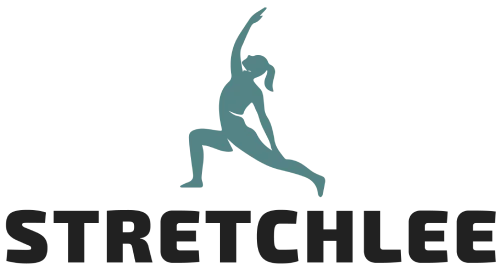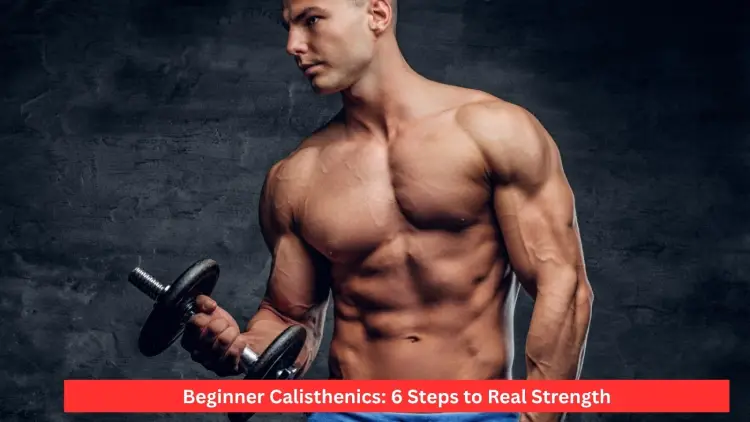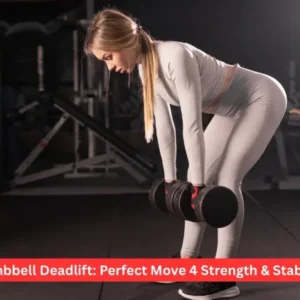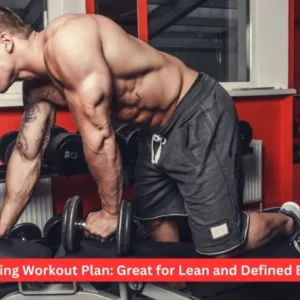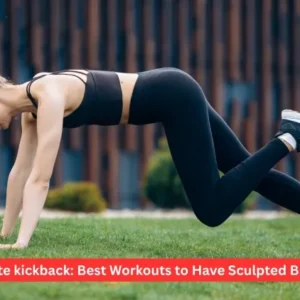When you are trying to build a stronger and better, fuller and more balanced chest, you must know how to hit lower chest. This is an aspect that is frequently neglected, but this part marks the bottom of your pecs that gives depth to your upper body and gives to a strong, good-looking body.
You can be targeting it with decline presses, dips, cable crossovers, and some types of push-ups. Learning form, angle, and consistency will guarantee the gradual improvement and visible definition with time.
Understanding the Lower Chest Anatomy
In order to know how to hit the lower chest, it is necessary first to know what it is. I mean the lower chest, which is the inferior fibers of pectoralis major, the fan-like, broad muscle that covers the upper front of your torso. These lower fibers are referred to as the sternal and enter into the upper arm bone (humerus). Their primary task is to pull your arms down and inward; this is the same movement as the decline press and dips.
Below the lower chest is the pectoralis minor, which is a smaller but thinner muscle that contributes to shoulder stability. Most individuals will mistake it with the lower chest, but it is located under the primary pec muscle and helps in the movement of the shoulder and not pushing strength. Below the chest is a total of the intercostal muscles, the muscles between the ribs that help in breathing and expansion of the torso.
An effective lower chest development will counter the upper pecs, avoiding the flat effect, and providing the chest with the desirable shelf appearance. This part is not only about aesthetics, but it is a crucial component of upper-body strength and posture.
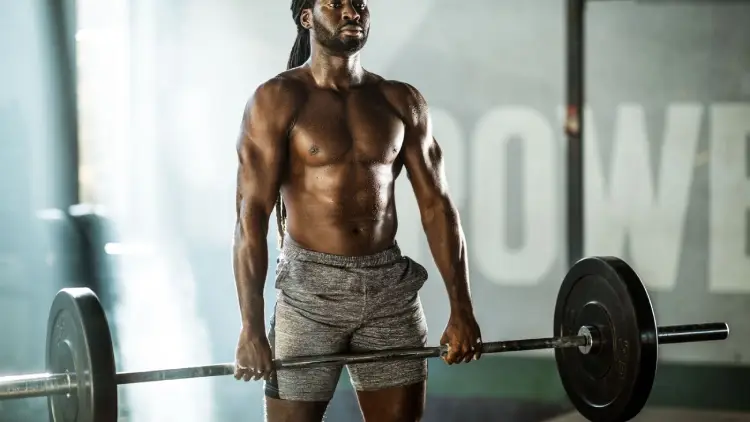
Best Exercises to Hit the Lower Chest
Developing the lower pecs is not a matter of luck or genes, but a matter of making the right move, which will focus on the lower muscles. Here is a summary of some of the best exercises that really assist you in mastering the art of hitting the lower chest.
1. Decline Bench Press
This is the king of all the lower-chest exercises and cannot be left out in any chest-building program. The decline bench press reaches a lower portion of the pectoralis major compared to the flat or incline ones.
How to Do It:
Set your bench at a 15–30° decline. Hold the barbell a little larger than the width of a shoulder, lower it towards your lower chest (a little above the ribcage), and push it up.
Form Tips:
Elbows should be kept bent at a 45-degree angle. Emphasize controlled motion and not heavy weight.
Hi, It Works:
The pec fibers at the lower part of the pec are perfectly in line with the downward angle, which guarantees deep activation.
Bonus: You may also do a decline dumbbell press to ensure that each pec is isolated and muscular imbalances are corrected.
2. Chest Dips (Bodyweight or Weighted)
When it comes to how to hit the lower chest using bodyweight, dips are unbeatable. They are compound movements that engage the entire chest, triceps, and shoulders — with a special focus on the lower section when performed with a forward lean.
- How to Do It:
Grab the parallel bars and lift yourself. Lean slightly forward, lower your body slowly until your elbows reach 90°, then press back up. - Tips for Maximum Activation:
Keep your chin down, chest forward, and avoid locking out your arms at the top. - Variation: Add a weight belt once you can easily perform 12–15 reps.
Why it’s effective: The natural dipping motion mimics the decline press, allowing a full stretch and contraction of the lower chest.
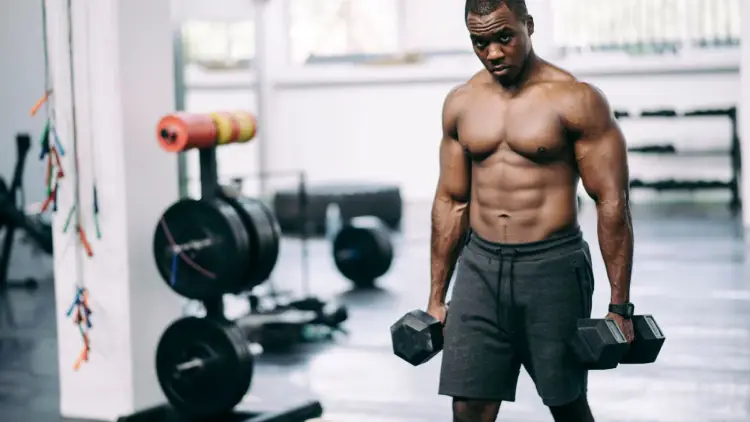
3. Decline Dumbbell Press
How to Do It: Hold dumbbells above your chest while lying on a decline bench. Press them back up after lowering them gradually to your sides until you feel a stretch.
Pro Tip: For a more powerful contraction, turn your wrists slightly inward at the top.
Why It’s Great: Stabilizing exercises with dumbbells. The decline dumbbell press is a great accessory movement because it allows you to move in a wider range of motion than the barbell press.
Muscles and make sure your chest works equally on both sides.
4. Cable Crossover (Low to High)
Continuous tension from cable exercises is ideal for defining and shaping the lower chest.
How to Complete It:
- Lower the cables to their lowest setting: Lean slightly forward, bring both handles across your body and upward until they meet close to your chest.
- Pay attention to: a deep stretch at the bottom and a slow, deliberate squeeze at the top.
- Variation: Try different angles; even a slight adjustment can cause the focus to move from the mid to the lower chest.
5. Decline Push-Ups
Decline push-ups are the most effective way to work your lower chest without any special equipment when you’re training at home.
How to Complete It:
Put your hands on the floor and your feet on a raised surface, such as a chair or bench. Push yourself up after lowering your body until your chest almost touches the floor.
The Reason It Works
Similar to a decline press, the raised feet produce a downward pressing angle that works the lower pecs.
Progress: As you gain strength, use resistance bands or add a weighted backpack.
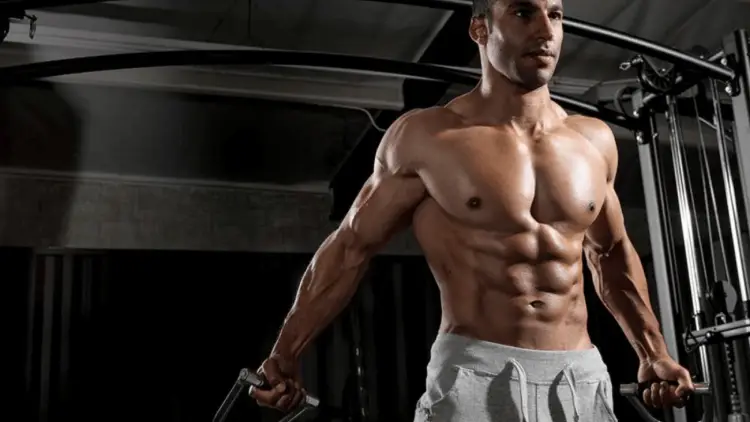
Pro Tips for Building a Better Lower Chest
Although the lower chest may feel unyielding, this is frequently the result of improper form or uneven training. Here’s how to increase the effectiveness of your workouts:
- Employ Decline Angles: Lower fibers are specifically targeted by exercises done at a decline (15–30 degrees).
- Pay Attention to Form: To avoid shoulder strain, keep your chest up and your shoulders back.
- Train Wisely by alternating lighter isolation exercises (cables, push-ups) with more strenuous compound lifts (presses, dips).
- Mind-Muscle Connection: Picture your lower chest tensing up with each repetition.
- Rest and Recuperation: During recuperation, muscles grow. Instead of training your chest every day, do it once or twice a week.
- Balance is Key: Pay attention to your back and upper chest; symmetry improves posture and appearance.
Common Mistakes When Targeting the Lower Chest
Even when people know how to hit the lower chest, they often sabotage their progress by making avoidable errors:
- Overdoing Flat Bench Presses: These mainly build the mid-chest, leaving the lower section underdeveloped.
- Wrong Decline Angle: Too steep a decline strains your shoulders; 15–30° is ideal.
- Rushing Reps: Fast, jerky reps reduce time under tension and lead to poor muscle activation.
- Neglecting Warm-ups: Cold muscles are prone to injury; always stretch and warm up.
- Ignoring Nutrition: Chest growth depends as much on protein intake and rest as on training.
Is the Lower Chest Hard to Build?
There has been a myth that the lower part of the chest is the hardest part of the chest to build, and this is a myth that many lifters believe. It is not more genetically challenging; it is just less focused in everyday life. The majority of individuals use flat or incline presses, disregarding both decline angles and dips.
Just like any other muscle, the lower chest will develop provided you use progressive overload, correct form, and rest. Genetics can determine the shape of your muscles, but it does not affect your size or definition-building capabilities.
Importance of the Lower Chest for a Balanced Physique
Highly developed lower chest provides your upper body with a strong, squat appearance, which is an attribute of a fit and balanced body. It makes you straight, stuffs shirts tighter, and fits your upper pecs and shoulders. Failure to take care of it may result in an uneven chest that appears top-heavy.
Even the bodybuilders and the athletes also train their lower chest to enhance the performance in pressing, swimming, boxing, among other power-based movements.
Bodyweight Training for the Lower Chest
No, you will not need to use body weight exercises, such as decline push-ups and dips, to build your lower chest. Ten thousand push-ups daily can assist in endurance and toning; however, this will not produce much hypertrophy absent progressive overload. In order to build muscle, one should seek a reduced number of reps with resistance, correct form, and slow tempo.
Lower Chest Pain and Recovery
If you experience lower chest pain during workouts, it’s usually due to muscle strain or poor form. However, if the pain feels deep or near the ribs or sternum, it might be related to costochondritis — inflammation where the ribs meet the breastbone. In such cases, rest and consult a doctor. Mild soreness, on the other hand, is a normal sign of muscle repair and growth.
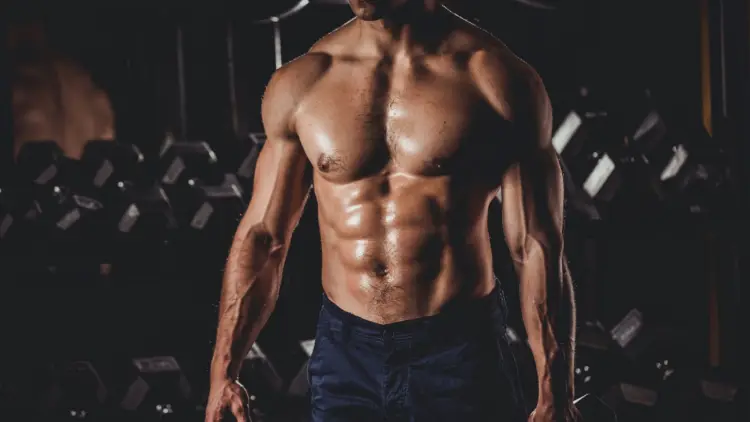
The Role of the Lower Chest in Overall Muscle Development
The upper chest is a little more visible, but the lower chest provides the whole, full appearance to the torso. It is commonly called the honeymoon muscle since a shapely chest is among the most popular parts of an athletic physique.
In the majority of cases, it can be observed after 8-12 weeks of training and correct nutrition. It is possible that muscle development is slowing down with age, especially over 40, but not that you can never gain it through intelligent rest and gradual effort.
Sample Lower-Chest Workout Routine
This routine has the highest chance of success with two sessions every week and a minimum of two rest days:
- Decline Bench Press -4 sets 8-10 reps each set.
- Chest Dips (Weighted) 3 sets 10-12 reps.
- Decline Dumbbell Press 3 sets 8-10 reps.
- Crossover (Low to High) using cables 3 sets with 12-15 reps.
- Push-Up Repetition -It will be 2 sets to failure.
Finish by stretching lightly to enhance flexibility and recovery.
Conclusion
Mastering how to hit the lower chest is simply a matter of learning the anatomy, learning angles, and remaining consistent. The lower chest is not difficult to develop, but it requires a combination of the right decline presses, dips, and cable work. In excellent shape, balanced nutrition, and patience, you will find that your lower chest will get firmer, bigger, and sharper.
Properly put, a full chest means not only huge weights, but serious, intense training that takes shape of every inch of your body.
Frequently Asked Questions
1. What is the way I can strike my lower chest at home?
Do push-ups or dips with a forward curve to engage the lower pecs.
2. Why is my lower chest not growing?
You may skip decline angles -add dips and decline presses, which are more effective.
3. Do lower chest exercises increase with body weight exercises?
Yes, regularly doing push-ups and dips can help shape your lower chest.
4. The period of lower chest outcome?
When done properly and with routine, noticeable results can come in approximately 812 weeks.
